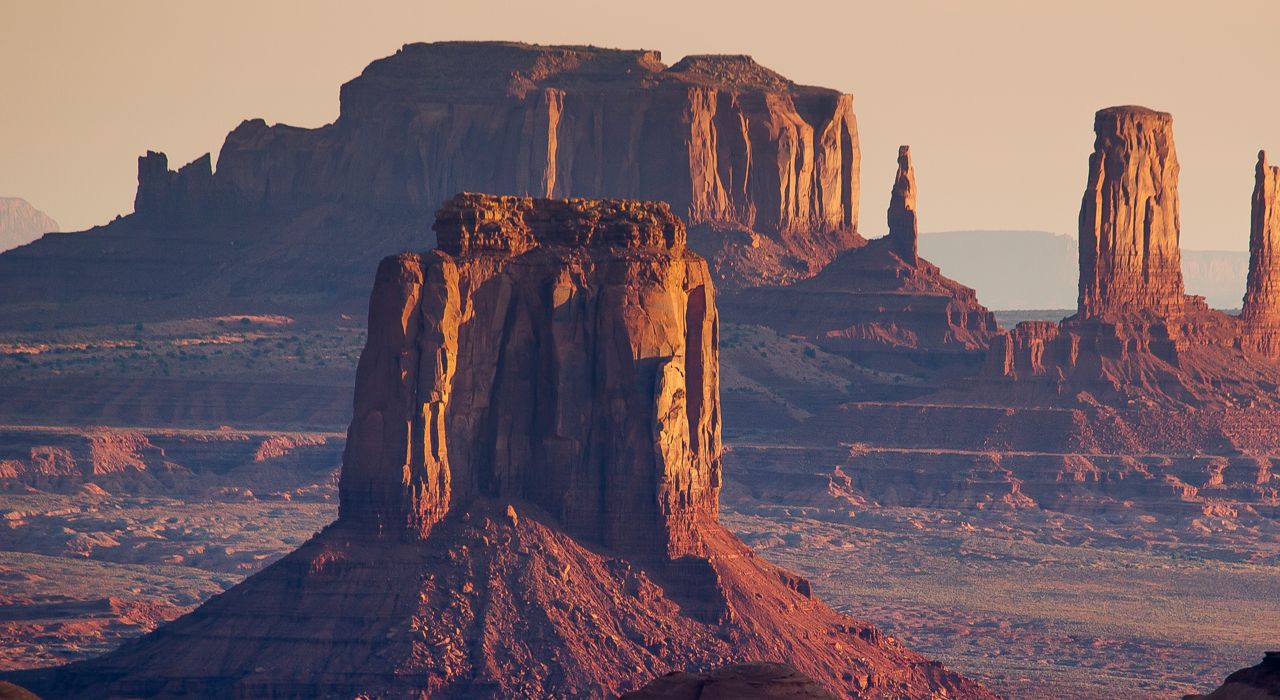Secrets Of Utah’s Monument Valley Monoliths

Have you ever wondered what makes Monument Valley so special? This stunning region in Utah is famous for its towering monoliths, which have been featured in countless movies and photographs. These natural sandstone formations rise dramatically from the desert floor, creating a landscape that feels almost otherworldly. Visitors to Monument Valley can explore these incredible structures up close, either by hiking or taking a guided tour. The area is also rich in Native American history, adding another layer of intrigue to your visit. Whether you're an avid photographer, a history buff, or just someone who loves breathtaking scenery, Monument Valley's monoliths offer something truly unforgettable.
The Enigmatic Appeal of Monument Valley
Monument Valley, a stunning expanse of sandstone buttes, mesas, and spires, has long captured the imagination of travelers. This iconic landscape, often featured in Western films, offers more than just breathtaking views. Hidden within its vastness are mysterious monoliths that add an extra layer of intrigue. Let's uncover some of these fascinating structures.
1. The Totem Pole
Standing tall and slender, the Totem Pole is a striking monolith that resembles the traditional totem poles of Native American tribes. Its unique shape and towering height make it a must-see.
- Height: Approximately 450 feet
- Best Time to Visit: Early morning for the best light and fewer crowds
- Fun Fact: The Totem Pole was featured in the 1975 film "The Eiger Sanction."
2. The Mittens
The East and West Mittens are perhaps the most recognizable formations in Monument Valley. These twin monoliths look like giant hands reaching out of the earth.
- Height: Around 6,000 feet above sea level
- Best Time to Visit: Sunset, when the rocks glow a deep red
- Fun Fact: The Mittens are often used as a symbol of the American Southwest.
3. The Three Sisters
This trio of slender rock formations stands side by side, resembling three nuns in a habit. The Three Sisters are a popular spot for photography.
- Height: Varies, but the tallest is about 1,000 feet
- Best Time to Visit: Late afternoon for dramatic shadows
- Fun Fact: The Three Sisters are often included in guided tours of Monument Valley.
4. The Thumb
The Thumb is a solitary spire that looks like a giant thumb sticking out of the ground. Its isolated position makes it a fascinating subject for photographers.
- Height: Approximately 200 feet
- Best Time to Visit: Midday when the sun is directly overhead
- Fun Fact: The Thumb is also known as "El Capitan" by some locals.
5. The Yei Bi Chei
This formation consists of several spires that resemble a group of dancers. The Yei Bi Chei is named after the Navajo spiritual beings and is considered sacred.
- Height: Varies, but the tallest spire is about 1,500 feet
- Best Time to Visit: Early morning for the best light
- Fun Fact: The Yei Bi Chei is often used in Navajo ceremonies and rituals.
6. The Elephant Butte
Shaped like an elephant lying down, this massive butte is one of the more whimsical formations in Monument Valley. Its unique shape makes it a favorite among visitors.
- Height: Approximately 1,000 feet
- Best Time to Visit: Late afternoon for the best light
- Fun Fact: The Elephant Butte is often included in guided jeep tours of the valley.
7. The Camel Butte
Resembling a camel resting on the desert floor, the Camel Butte is another fascinating formation. Its distinct shape and size make it a standout feature.
- Height: Around 800 feet
- Best Time to Visit: Early morning or late afternoon
- Fun Fact: The Camel Butte is a popular spot for sunrise photography.
8. The Rain God Mesa
This massive mesa is named after the Navajo Rain God and is considered a sacred site. Its sheer size and flat top make it an imposing presence in the valley.
- Height: Approximately 1,200 feet
- Best Time to Visit: Anytime, but especially dramatic during a storm
- Fun Fact: The Rain God Mesa is often used in Navajo storytelling and legends.
9. The Artist's Point
While not a monolith itself, Artist's Point offers one of the best panoramic views of Monument Valley's monoliths. It's a perfect spot to take in the grandeur of the landscape.
- Height: Elevated viewpoint
- Best Time to Visit: Sunrise or sunset for the best colors
- Fun Fact: Many artists and photographers have captured the view from Artist's Point, making it a popular spot for creative inspiration.
10. The Sentinel Mesa
This imposing mesa stands guard over Monument Valley, offering a commanding view of the surrounding landscape. Its flat top and steep sides make it a striking feature.
- Height: Approximately 1,000 feet
- Best Time to Visit: Late afternoon for the best light
- Fun Fact: The Sentinel Mesa is often used as a landmark for navigation within the valley.
The Magic of Monument Valley
Monument Valley's monoliths offer a glimpse into nature's artistry. These towering rock formations, shaped by time and weather, stand as silent guardians of the past. Exploring this area, you can't help but feel a connection to the ancient cultures that once called it home. The vibrant colors, shifting shadows, and vast landscapes create a scene straight out of a movie. Whether you're hiking, driving, or simply taking in the view, each moment spent here is unforgettable. The valley's beauty and mystery continue to captivate visitors from around the world. If you haven't yet experienced Monument Valley, it's time to add it to your travel list. The magic of this place is something everyone should witness at least once.

